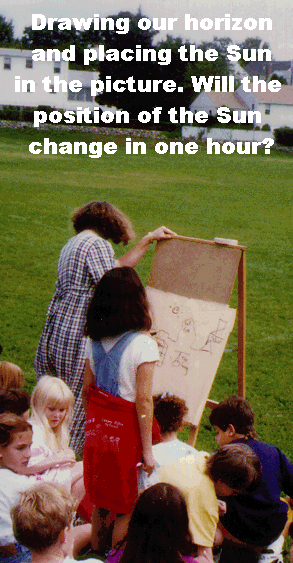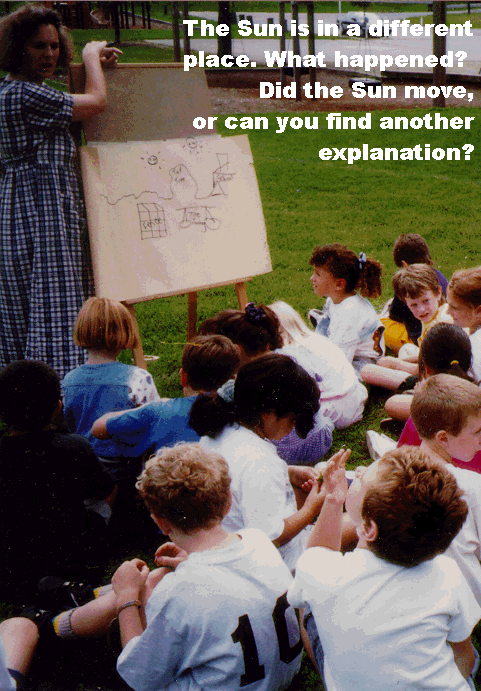 |
Gallery of Activities in Action |
 |
Gallery of Activities in Action |
 |
This is part one in an investigation called "Hello, Sun!", where
students observe the Sun several times in one day. We often take for
granted that a day happens, and this outdoors investigation shows
children what they may not have noticed before: the Sun appears to
scoot across the sky during a school day. Children learn to make
horizon maps, measure the height of the Sun with their fists as
measuring tools, and talk about motion as relative to where you are in
the scheme of things. |
 |
The second part of every investigation involves talking about what has just happened to develop some theories about it. Here, Mrs. Thom is pointing out what they have all agreed is a fact they have just observed: where the Sun is. The students are now contemplating this and making some predictions about what might happen next. |
 |
Another observation has been made and placed on the big map. Students are now deciding how their prediction fits with this new observed fact. Can they make a new prediction for the next observation which might fit better with the observations? What might actually be happening here? What is their world doing to make this apparent motion? What is the Sun doing? What happens at night? |
 |
The lower grades focussed more on shadows. Here is a first grade class out side on a sunny day tracing the shadows of their classmates from an investigation called "Me and My Shadow". Their teacher, Mrs. Pooley, asked them question such as: What makes a shadow? How can you change the shape of a shadow? What kinds of things can have shadows? Are all shadows caused by the Sun?While these students were tracing shadows, they found that by the time they had traced around to the other side of the shadow, they noticed their first lines were no longer on the shadow edge. They wondered about how this could happen, and discussion soon lead them into thinking about how shadows could change direction. Since they knew that their classmate had not moved, that could only mean the Sun had. |
Author/WebMaster Tania Ruiz
Last updated January 14, 1997